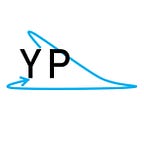This Euclidean geometry question is worth looking at | I present a solution here | Classic type solution
Simple Geometric Problem, full of lessons
The issue is described in the drawing of figure 1.
Commented solution.
The problem suggests that the solution is through geometric constructions, but this does not prevent it from being done through algebraic resources, such as the angle bisector theorem of the triangle.
A good strategy is to redraw the figure in a way that allows the use of the similarity properties of triangles.
So the first step is to use point A as a center or vertex and translate point C using segment AC as a circle radius. Point C’’ will be positioned at an angle of 20° as shown in the figure.
Then the points C, C’’ and A will form the vertices of an isosceles triangle, and the internal angle corresponding to the vertex at point A will be 100°.
We must construct an angle from point C using point D as vertex and applying the amplitude of 30°, determining point C’.
We must translate the side AC to point D passing through C’, given point B’.
Points B’, B and D form a triangle that in context suggests that it is similar and congruent to the triangle formed by points C, C’’ and A. If so, then we have the requested proof.
We then have to calculate the amplitude of the angle in the triangle given by the points B’, B, D over the vertex at the point D. This appears in the steps
Upon inspection, it is concluded that point C’’ corresponds to a reflection of point B in relation to the axis passing through points D’ and C.
This is enough to show that the triangle formed by the points C, C’’ and A is equal (or congruent) to the triangle formed by the points B’, B and D.
